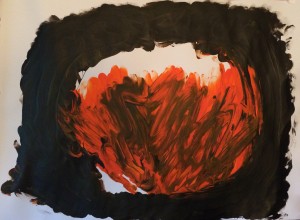A common “cognitive error” (Friedrich Wilhelm Nietzsche) is to see people, places, things, beliefs, and even the world in extremist terms.
The worst despots, tyrants, and terrorists think in a polarized fashion. In overly simplified language, the despots think they themselves are “good”, or “right”, or “better”, and that “the other” or “not me” is “evil”, “wrong”, or “less”. The split of good and bad/evil resides inside of the self. Depending upon the history and profile of the individual, the split is externalized, internalized, or both. For those who internalize the split, this split manifests in forms of self-harm, attempts at self-annihilation or suicide.
Carl Jung, Marsha Lineman, and Stephen Wolinsky, are counseling theorists who were all influenced by Buddhism. Each in their own way address the problem of thought polarities and/or the juxtaposition of opposites. Opening the door to non-linear forms of thought, integrating the opposites, is able to bring peace to the disturbed mind. All three professionals found ways to treat the commonly noted black and white thinking of clients new to health and healing. All three found ways to integrate thought, and also the disparate aspects of self, split apart by trauma, grief and loss, addiction, neglect, and self-harm.
In my practice, I find that painting mandalas, whether a circle or a body tracing, is able to help a client focus better. Focusing better enables the client to identify, discriminate, and address patterns of thought that are self-destructive.
A mandala, is a painting inside of a circle. The term mandala is a Sanskrit word meaning center, circumference, or magic circle. (S. Fincher, 1991).
“Unlike a diary, a linear account, the mandala acts in the manner of gestalt for retrospective reflection” (Kellogg, 1997, p. 3). Dairies are a very potent aspect of healing, what Kellogg is saying here is that adding a sensory motor activity, such as painting, deepens and expands the experience as well as the learning.
First of all, painting a mandala is a form of meditation. No matter what your cultural or religious background, meditation can be helpful. Yet how many clients, after sitting in front of a candle flame, while trying to focus attention and calm the mind,… find the task an illusive quest?
Painting a mandala is a task I refer to as, “ACTIVE MEDITATION”. Jung spoke of “active imagination”, which is a very powerful concept. Today in our busy world, “active meditation,” can work wonders with our short attention spans and need for novelty.
I have an office motto, “Keep the hands busy and the mind will quiet and awaken”.
Not only is art therapy able to help us center ourselves in a very short period of time, painting a mandala is able to help us become more awake. “Active meditation,” (a term coined by this author), works in a similar manner to a traditional meditation practice, but it reaches a larger audience. A mandala, “Shows the natural urge to live out our potential, to fulfill the pattern of our whole personality.” (Fincher, 1991, p. 2)
The two mandalas above were painted back to back, one week one mandala, the next week the other. I refer to these mandalas as, “Inside Out/Outside In”. The actual topic or focus of these mandalas is not as important as how much they helped the client move forward in his ability to think in dream possibilities for the future. Somehow these paintings, along with other activities, brought him moments of hope. Once he had a bit of hope, motivation to develop more personal autonomy and accountability in his life became easier.


